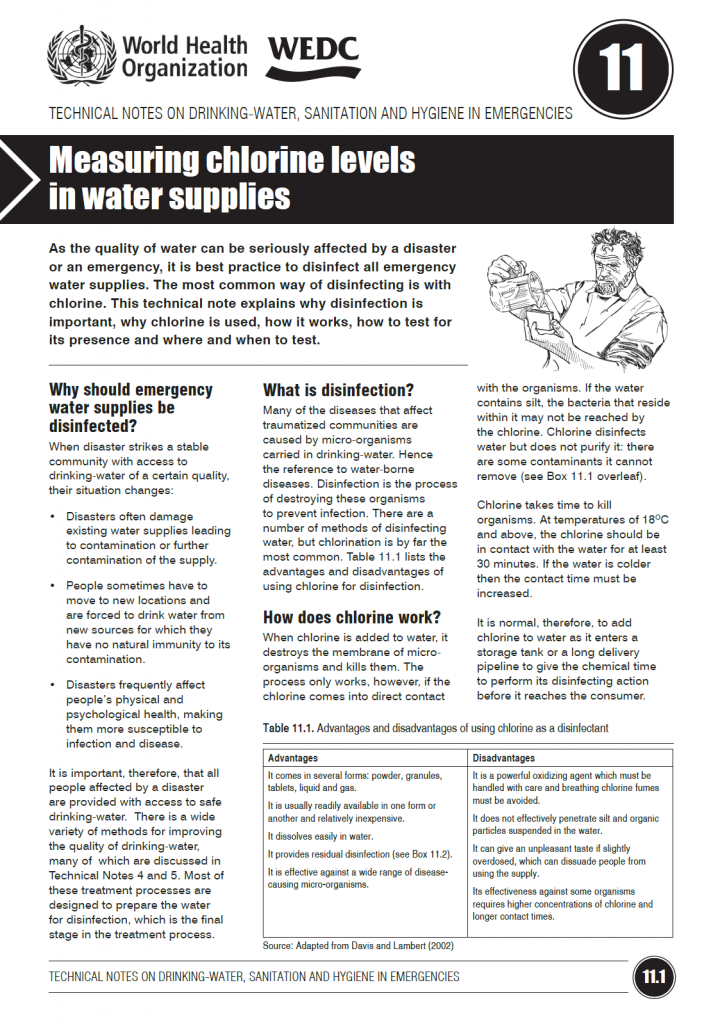Measuring chlorine levels in water supplies Technical Notes on Drinking-Water, Sanitation and Hygiene in Emergencies Reed, B. (2013)
As the quality of water can be seriously affected by a disaster or an emergency, it is best practice to disinfect all emergency water supplies. The most common way of disinfecting is with chlorine. This technical note explains why disinfection is important, why chlorine is used, how it works, how to test for its presence and where and when to test.
Bibliographic information
Reed, B. (2013). Measuring chlorine levels in water supplies Technical Notes on Drinking-Water, Sanitation and Hygiene in Emergencies WEDC
Filter / Tags
Politicians and local decision makersGuidelines and manualsFactsheets and policy briefsTechnical drawingsEnglishWater (irrigation, process, other)

